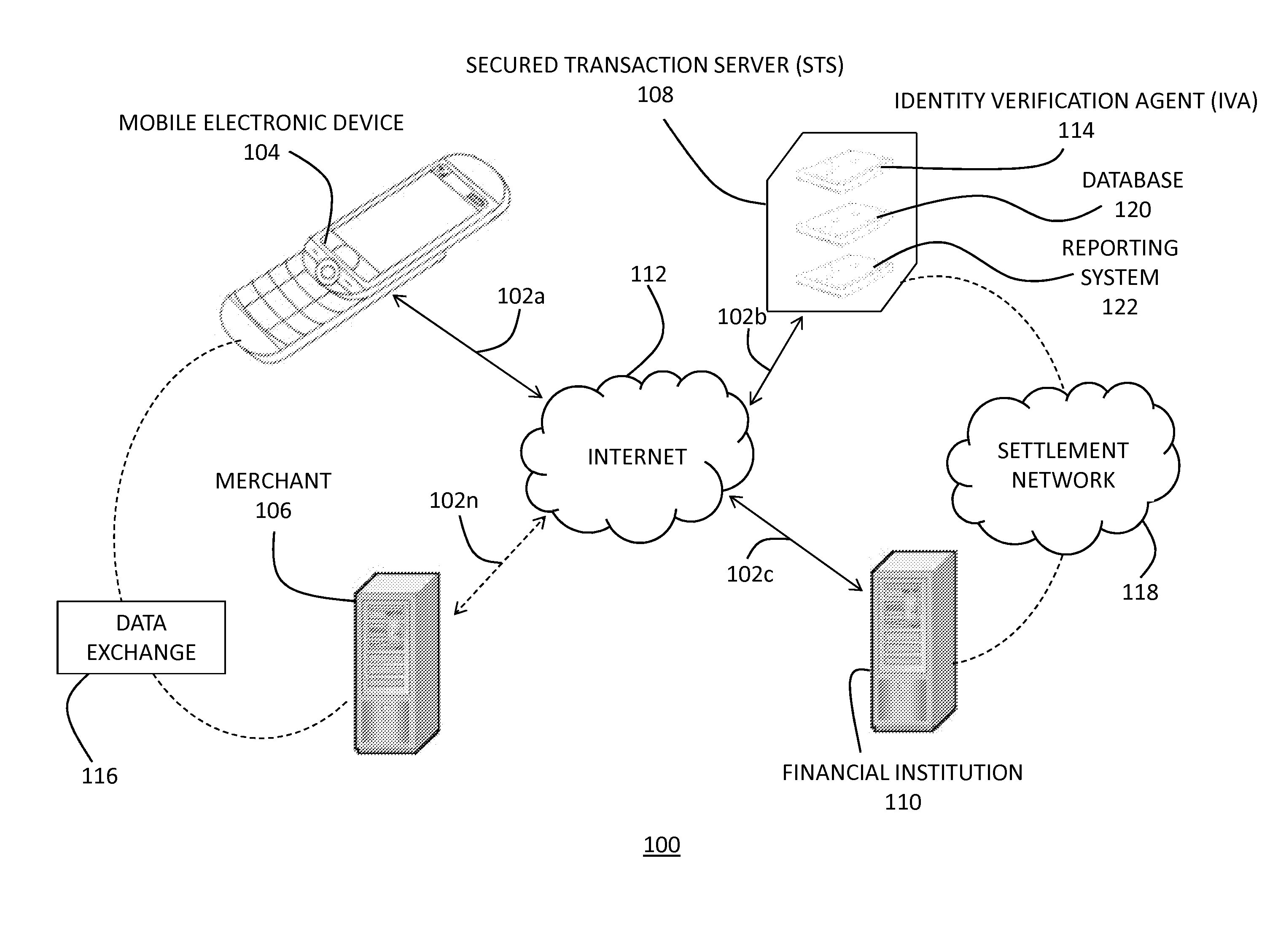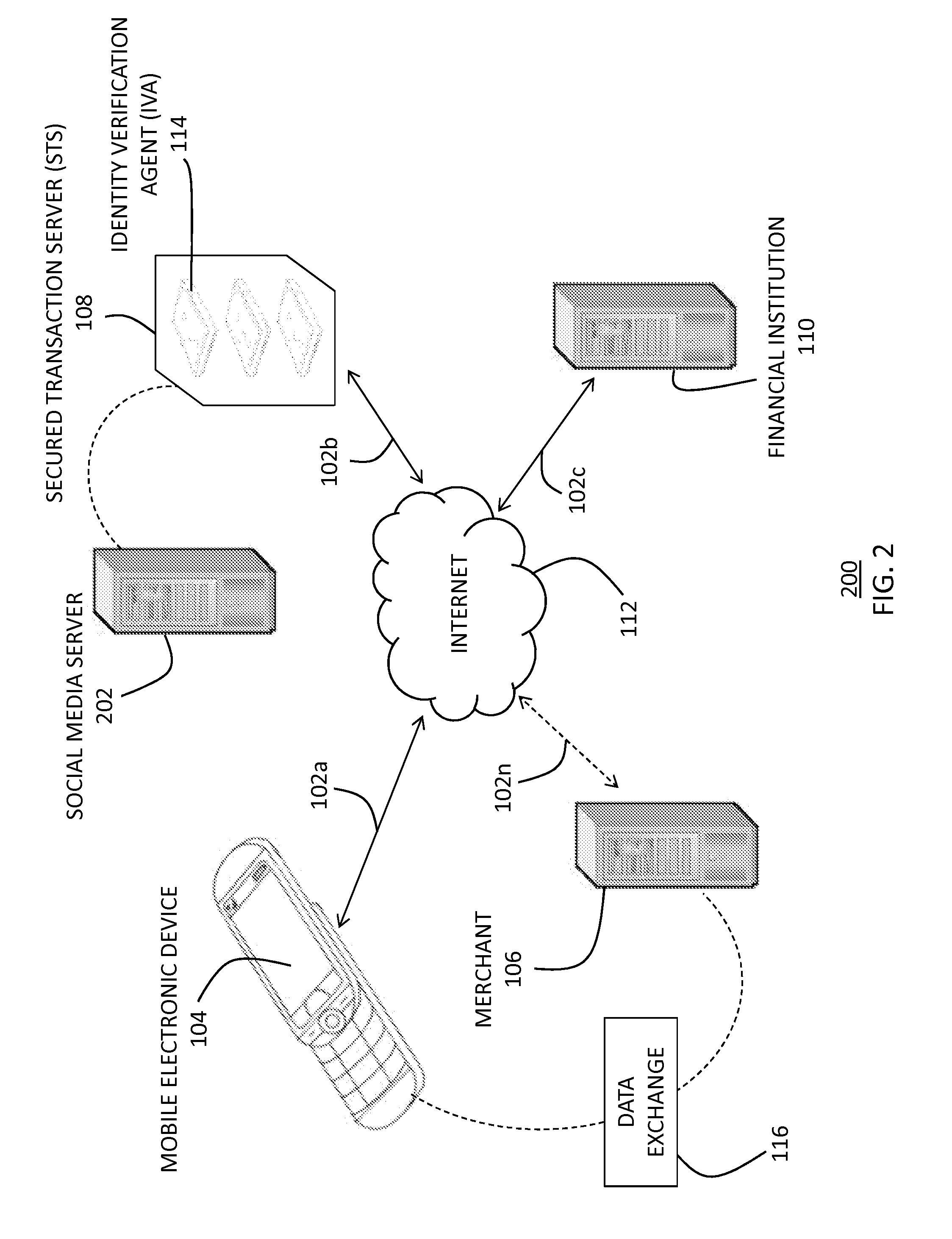Method for verifying a consumer's identity within a consumer/merchant transaction
a consumer and merchant transaction technology, applied in the field of financial transactions, can solve the problems of merchants being exposed to card network fees, merchants and consumers being unable to effectively prevent fraudulent transactions, and merchants being unable to protect the financial information and identity of consumers
- Summary
- Abstract
- Description
- Claims
- Application Information
AI Technical Summary
Benefits of technology
Problems solved by technology
Method used
Image
Examples
Embodiment Construction
[0052]The present invention advantageously provides a method and device for conducting secured transactions with a merchant. The present invention may be used to verify a user's and / or consumer's identity in order to prevent fraudulent financial transactions, prevent fraud within the medical community, and other transactions where verifying the identity / authorization of the user is desired.
[0053]Although the specification concludes with claims defining the features of the invention that are regarded as novel, it is believed that the invention will be better understood from a consideration of the following description in conjunction with the drawing figures, in which like reference numerals are carried forward. It is to be understood that the disclosed embodiments are merely exemplary of the invention, which can be embodied in various forms.
[0054]Network
[0055]With reference now to FIG. 1, FIG. 1 depicts a representation of a network 100 of data processing systems in which the present...
PUM
 Login to View More
Login to View More Abstract
Description
Claims
Application Information
 Login to View More
Login to View More - R&D
- Intellectual Property
- Life Sciences
- Materials
- Tech Scout
- Unparalleled Data Quality
- Higher Quality Content
- 60% Fewer Hallucinations
Browse by: Latest US Patents, China's latest patents, Technical Efficacy Thesaurus, Application Domain, Technology Topic, Popular Technical Reports.
© 2025 PatSnap. All rights reserved.Legal|Privacy policy|Modern Slavery Act Transparency Statement|Sitemap|About US| Contact US: help@patsnap.com



